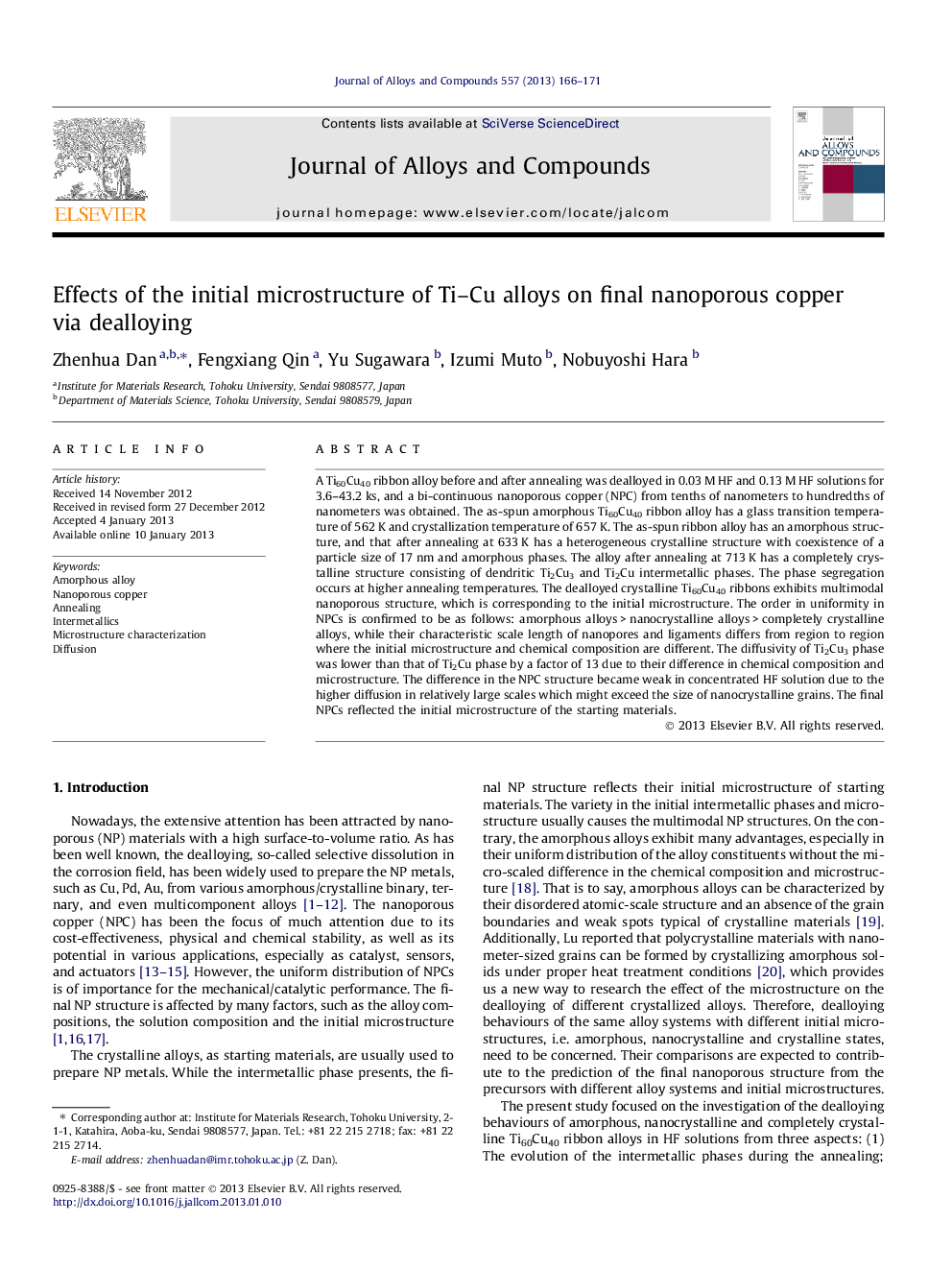| کد مقاله | کد نشریه | سال انتشار | مقاله انگلیسی | نسخه تمام متن |
|---|---|---|---|---|
| 1614561 | 1516336 | 2013 | 6 صفحه PDF | دانلود رایگان |

A Ti60Cu40 ribbon alloy before and after annealing was dealloyed in 0.03 M HF and 0.13 M HF solutions for 3.6–43.2 ks, and a bi-continuous nanoporous copper (NPC) from tenths of nanometers to hundredths of nanometers was obtained. The as-spun amorphous Ti60Cu40 ribbon alloy has a glass transition temperature of 562 K and crystallization temperature of 657 K. The as-spun ribbon alloy has an amorphous structure, and that after annealing at 633 K has a heterogeneous crystalline structure with coexistence of a particle size of 17 nm and amorphous phases. The alloy after annealing at 713 K has a completely crystalline structure consisting of dendritic Ti2Cu3 and Ti2Cu intermetallic phases. The phase segregation occurs at higher annealing temperatures. The dealloyed crystalline Ti60Cu40 ribbons exhibits multimodal nanoporous structure, which is corresponding to the initial microstructure. The order in uniformity in NPCs is confirmed to be as follows: amorphous alloys > nanocrystalline alloys > completely crystalline alloys, while their characteristic scale length of nanopores and ligaments differs from region to region where the initial microstructure and chemical composition are different. The diffusivity of Ti2Cu3 phase was lower than that of Ti2Cu phase by a factor of 13 due to their difference in chemical composition and microstructure. The difference in the NPC structure became weak in concentrated HF solution due to the higher diffusion in relatively large scales which might exceed the size of nanocrystalline grains. The final NPCs reflected the initial microstructure of the starting materials.
Figure optionsDownload as PowerPoint slideHighlights
► Amorphous Ti60Cu40 alloy has a Tg of 562 K and Tx of 657 K.
► Annealing caused precipitation of Ti2Cu3, Ti2Cu and γ-TiCu intermetallics.
► Initial microstructures of Ti60Cu40 precursors predetermine the final nanoporous Cu.
► Uniform nanoporosity is ranked as amorphous > nanocrystalline > crystalline.
► Difference in surface diffusivity caused by distributed intermetallics.
Journal: Journal of Alloys and Compounds - Volume 557, 25 April 2013, Pages 166–171